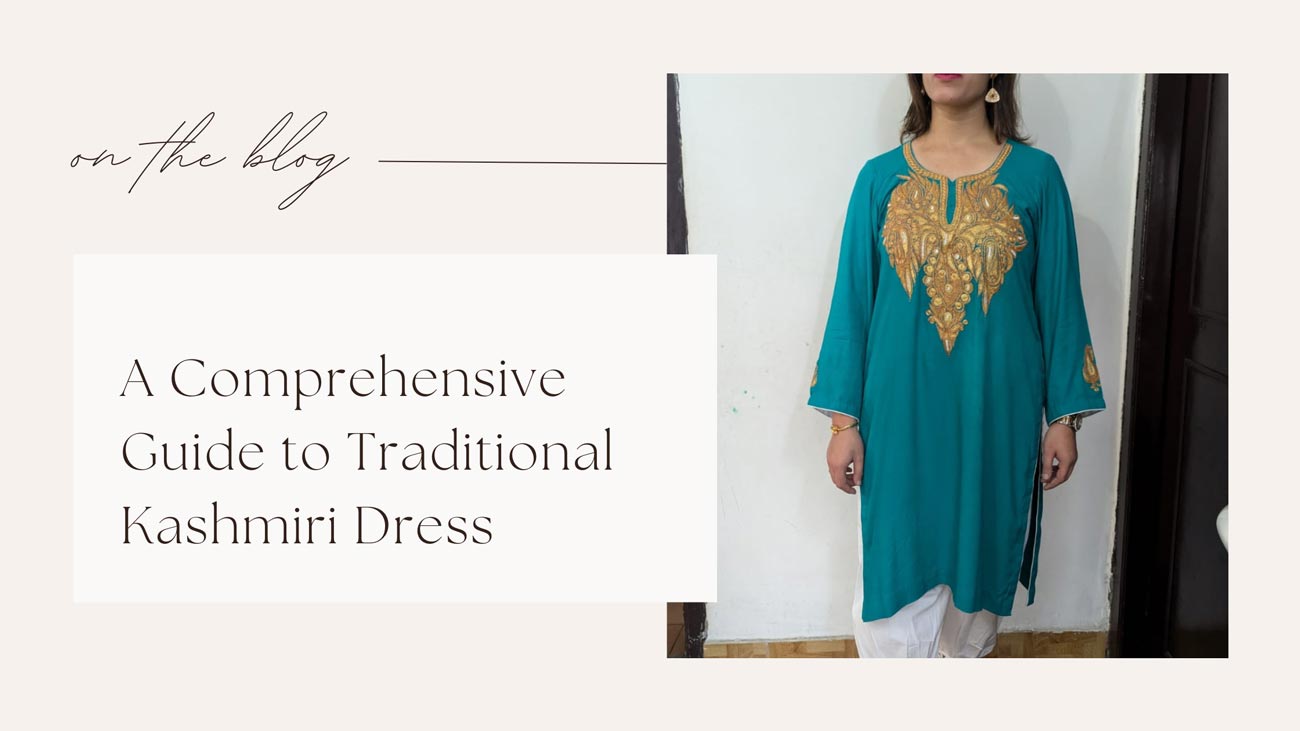
Traditional Kashmiri attire is an essential part of the rich cultural heritage of Kashmir, celebrated for its distinct design, intricate craftsmanship, and practicality for the region’s cold climate. These garments, like the famous Pheran, are not only functional but also emblematic of the valley’s identity and history. Below, we delve into various traditional Kashmiri garments, accessories, and the unique handcraft techniques that make them both timeless and significant.
The Pheran: A Cultural Icon
The Pheran is the most recognizable piece of Kashmiri attire. This long, loose-fitting garment, typically extending down to the knees or ankles, is worn by both men and women. Traditionally crafted from wool or cotton, Pherans are ideal for Kashmir’s chilly weather. For colder months, the garment is often layered over warm inner linings and accompanied by a kangri, a small pot filled with hot embers, placed underneath to provide warmth.
Key Features of the Pheran:
- Design: Loose and flowy, providing warmth and freedom of movement.
- Material: Wool for winter, cotton for summer; often adorned with intricate embroidery.
- Kangri Integration: Worn with a kangri for added warmth during harsh winters.
The Shalwar: Comfort and Functionality
Accompanying the Pheran is the Shalwar, a type of loose, tapered pant. Kashmiri Shalwars are designed with a wide upper section and narrower ankles, enhancing both comfort and style. Women’s shalwars are often more decorative, with vibrant patterns or delicate embroidery, while men’s are typically simpler.
Shalwar Characteristics:
- Fit: Loose around the hips, narrowing towards the ankles.
- Fabric: Lightweight fabrics for everyday wear, heavier materials for special occasions.
- Variation: Decorated with lace or embroidery for women.
The Turban and Cap: Headwear with Symbolism
Kashmiri headwear, such as turbans for men and Kasaba or Taranga for women, symbolizes tradition and social identity. Men’s turbans are often simple yet stylish, while the Taranga, traditionally worn by Kashmiri Pandit women, is a long headdress that drapes down the back and is secured with a pin.
Types of Traditional Kashmiri Headwear:
- Taranga: A long scarf worn by women, specifically among Kashmiri Pandits.
- Kasaba: A cap decorated with coins or small pendants, often seen in women’s festive attire.
- Turban: Typically worn by men as a mark of respect and honor.
Kashmiri Shawls: Artistry in Wool
Kashmir is famed for its exquisite shawls, including the renowned Pashmina and Shahtoosh varieties. These luxurious shawls are woven from fine wool and are often embellished with intricate embroidery, particularly the celebrated sozni or kani stitching.
Distinctive Features of Kashmiri Shawls:
- Pashmina: Made from the wool of the Pashmina goat, known for its softness and warmth.
- Shahtoosh: Known as the “King of Shawls,” these are lightweight yet incredibly warm.
- Embellishments: Sozni, Tilla, and Kani embroideries make each shawl a work of art.
The Unique Embroidery Techniques
The hallmark of Kashmiri attire lies in its embroidery techniques, which transform fabrics into masterpieces. Sozni and Tilla are two of the most admired techniques, each bringing a unique charm to Kashmiri clothing.
Types of Kashmiri Embroidery:
- Sozni Embroidery: Fine needlework often depicting flora and fauna, typically seen on shawls.
- Tilla Embroidery: Metallic threadwork, often gold or silver, used for embellishing Pherans and festive garments.
- Aari Embroidery: Hook-based embroidery creating intricate chain-stitch patterns.
Traditional Jewelry of Kashmir
Jewelry is an integral part of traditional Kashmiri attire. Dejhoor, worn by married Kashmiri Pandit women, is a gold ornament that hangs from the ears, symbolizing marital status. Other jewelry pieces include Jiggni, Kana-Door, and Aath, each reflecting Kashmiri women’s love for adornment and craftsmanship.
Key Jewelry Pieces:
- Dejhoor: A distinctive earring symbolizing marital status among Kashmiri Pandit women.
- Jiggni and Kana-Door: Ornamental headpieces, often studded with gemstones.
- Aath: Heavy anklets that add elegance to traditional Kashmiri dress.
Conclusion
Kashmiri dress reflects the region’s blend of cultural heritage, environmental adaptation, and artistic excellence. Each garment and accessory, from the cozy Pheran to the elegant Kashmiri shawls, tells a story of Kashmir’s unique lifestyle and values. The skilled embroidery, luxurious fabrics, and meaningful jewelry showcase not only Kashmir’s traditions but also its people’s enduring connection to their heritage.